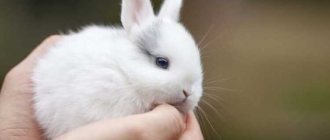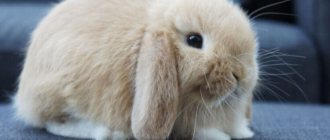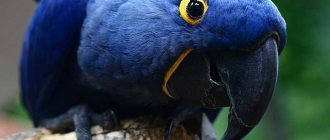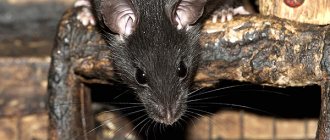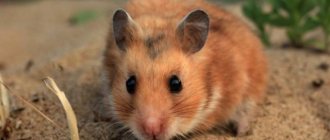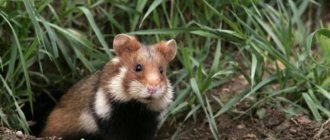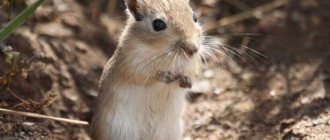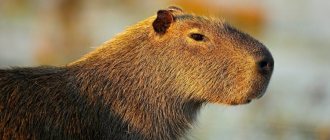Many parents choose a guinea pig as their child's first pet. This is quite understandable, because rodents are easily tamed, quickly remember their name and, if treated well, become affectionate and sociable. But these are not all the advantages of an animal with an unusual name, which in fact has nothing to do with the sea or pigs. There are many other interesting facts about the origin and behavioral characteristics of this cute rodent.
Origin story
In prehistoric times, Josephoartigasia monesi (ancestor of guinea pigs) reached a height of 1.5 m and 3 m in length, and weighed more than 1000 kg! Such animals bit much harder than tigers. Modern wild pigs jump well and even swim, climb rocks and tree branches, they are much more agile than their domesticated relatives. In the wild, guinea pigs form packs, where several dozen females are led by a male leader.
About 7 thousand years ago, an Indian people in the Andes (South America) managed to domesticate the guinea pig. The exact name of the tribe that domesticated these rodents has not been preserved. Today it is the territory of Peru, Bolivia, Ecuador and Colombia. At that time, the tender meat of rodents was eaten and used for ritual and even medicinal purposes.
The scientific name of Cavia porcellus is Latin for “little pig.” From the language of the Galibi tribe, the word cabiai was borrowed and transformed into cavia. Foreign breeders use the term Cavy (Cavey or Cavey), and in Russia the name “guinea pig” is widely used.
What kind of cage does a guinea pig need?
Guinea pigs need a lot more space than most people think. Miniature cages for hamsters and birds will not work here. Experts recommend choosing a “living space” of at least 0.7 square meters per animal. Large cages cannot always be found in the nearest store, but it is quite possible to buy them on the Internet, make them to order, or assemble them yourself. This house should be located in a quiet, secluded place away from large pets and drafts. There should also be no direct sunlight. The bedding in the cage is made from standard fillers of shavings, paper or hay - the same as for other rodents. Do not use softwood shavings (such as pine or cedar) as they are toxic to guinea pigs.
There must be a house in the cage. To make the animal feel even more comfortable, part of the “enclosure” can be closed from above.
Anatomy and physiology
The size of the animal depends on its breed. Body length ranges from 25-35 cm. There is almost no tail, but purebred guinea pigs have hanging ears. The body weight of males reaches 1-1.5 kg, and the weight of females is noticeably less - only 0.8-1.2 kg.
Normal body temperature is +38°C. The front paws have 4 toes, and the hind paws have only 3. Teeth grow throughout life.
The natural color is brown-gray; in the wild, this coat color helped the rodent hide from predators on rocky terrain. A modern domestic pig can be of any color, with fur of various textures and lengths.
Guinea pigs usually live no more than 8 years, on average up to 5 years. Pregnancy lasts 60-72 days. Each litter produces from 1 to 6 cubs. Only the female cares for the offspring.
You cannot leave a male and a pregnant female in the same cage, so as not to provoke a miscarriage.
Interesting fact! Some individuals prefer to live alone and do not accept the company of relatives.
A pig that does not give birth to its first offspring before the age of 6-7 months will not give birth to healthy babies later. The bones of her pelvis become too rigid and are no longer able to fully separate during childbirth.
Newborn pigs are almost no different from adults: they are covered with hair, their eyes are open. A few hours after birth, babies can already chew hay. The cubs spend only 3 weeks with their mother, after which they are ready for adulthood, although they do not stop growing until they are 1 year old.
All guinea pigs eat their own excrement. They need this to complete the digestion cycle. This is the only way the body can absorb vital vitamins B and K. The basis of the diet is herbs and green vegetables. Animals' bodies do not digest lactose, boiled vegetables and cereals, as well as meat foods.
Note! Cereals are required only by hairless breeds (skinnies), since these rodents spend a lot of energy to regulate heat exchange.
What to feed your guinea pig?
Pigs love to eat hay, cabbage, lettuce and carrots. Treat them to fruit snacks (such as banana or mango) once a week. You can give raisins twice a week. A healthy guinea pig diet is about 20% vegetables and 5% fruits. But you can’t give bread to pigs. And avoid giving your pet sugary treats or seeds, which can cause gastrointestinal problems. Use moderation: Guinea pigs can become obese if fed too much.
Vitamin C is a key element in a guinea pig's diet. Unlike most other mammals, they, like humans, do not produce it and must obtain it from food. Without vitamin C, guinea pigs develop scurvy. It manifests itself as numerous problems, including swollen joints, lethargy, skin and fur problems, loss of appetite, and more. Therefore, it is important to give the animal the appropriate supplements.
Important fact: Guinea pigs need a lot of roughage to wear down their teeth . A rodent's incisors grow continuously throughout its life, and can become too long in captivity. Therefore, it is important to place apple tree branches or purchased wooden blocks from a pet supply store in the rodent's cage. Otherwise, “neglected” teeth can cause the animal a lot of inconvenience and pain, including refusal to eat. As a last resort, the teeth can be trimmed or removed by a veterinarian, but this last resort should be avoided. By the way, the claws on the paws can also be difficult to grind down in captivity and need trimming.
Behavior and habits
Interesting facts about guinea pigs relate to the unusual behavior of rodents. Thus, animals are capable of making a variety of sounds. Each of them has its own meaning. For example, pregnant females can chirp like birds. Moreover, they prefer to do this at night, for 2-15 minutes. During the mating season, males make purring sounds to attract the attention of the female. Squeaking signals hunger, and squealing indicates aggression.
Rodents sleep for only 10-15 minutes, but they do this up to 10 times a day! Animals are good at distinguishing colors. And a sleeping pet keeps its eyes slightly open so as not to miss danger.
During the day, rodents are more active, so at night their owners are rarely awakened by noise in the cage.
Historical facts
The most interesting fact about guinea pigs is the origin of the name. Initially, they were called “overseas”, because they were brought from abroad. Over time, the first part of the name disappeared, leaving only “sea”. These rodents are wary of water and, with rare exceptions, are reluctant to take baths.
The English name - Guinea Pig, comes from the old English currency - the guinea. This is exactly how much one individual cost in Europe as soon as America was discovered, from which these strange animals were brought. In the 16th century this amount was considered decent, and the owners of such animals were considered wealthy.
Peru is considered the homeland of the animals, where they were first domesticated to be used for meat production. Breeding for agricultural production still occurs - there are special meat breeds of these animals. The animals were also considered quite valuable to be used as sacrifices to the ancient gods.
In some tribes, such as the Mochiko, pigs were considered sacred animals. They made sacrifices and worshiped them. The image of rodents served as a central element in the works of art created by representatives of this tribe.
Other fun facts about pigs
Every owner can tell a lot of interesting facts about their pet. And for those who are just planning to purchase guinea pigs, sellers like to communicate the following nuances:
- a pregnant female can “cancel” her birth - the cubs will dissolve inside her, or they will be “preserved” for several years;
- domestic guinea pigs do not like water and do not swim;
- a fall is very dangerous for a pet; it can easily be seriously injured and even die;
- There are hairless rodents - even allergy sufferers can have them;
- The length of the coat in some breeds reaches 50 cm.
Amazing facts about these unusual animals generate a feeling of sympathy even when meeting them in absentia. Therefore, the demand for such cute pets in pet stores remains consistently high in many countries around the world.
Underwater rocks
Is it difficult to care for a guinea pig? People who think that smaller animals require less attention than dogs and cats are mistaken. Cages (and often the area around the floor) require constant cleaning. The animals are quite sensitive to air temperature, drafts, stress and quality of food. Long-haired guinea pigs need to be brushed to prevent tangles from forming. Hair matted in clumps can cause real suffering to the animal. Establishing contact is also not easy. Young children will likely not wait many days while taming a pig before holding it. Consequently, the animal will not be happy about this. In addition, some animals never get used to such games and tenderness - this largely depends on their individual characteristics.
Guinea pigs do not like to be alone. They need a companion of their own species with whom they can “talk” , play, or just sit next to them. Communication is so important to their well-being that Switzerland has made it illegal to have just one pig. And if you get pigs of different sexes, one will have to be castrated.
Relatives of Kavya
Relatives of guinea pigs include beavers, squirrels, and even gophers, mice and rats. Such a large number of relatives is explained by the large number of rodents.
Among the relatives of Cavia there are many familiar and many unusual mammals:
- mara looks like a hare, but larger - weight up to 16 kg,
- agouti is an animal that resembles both a rabbit and the ancient ancestor of modern horses,
- paka - a cautious and more deer-like rodent, weighing up to 12 kg,
- The capybara is the largest representative of the order, weighing up to 60 kg, grows up to 140 cm in length, and leads a semi-aquatic lifestyle.
Interesting information
- Guinea pigs live from 5 to 7 years. For comparison, mice, rats and hamsters live about two years.
- These rodents sleep for only 10-15 minutes several times a day. They may fall asleep with their eyes open.
- The height of an adult animal can reach from 20 to 25 centimeters in length, and weight from 800 to 1200 grams. As a rule, males are slightly larger than females.
- Despite having fangs and claws, guinea pigs do not like to bite or scratch. Although if you make them angry, they may bite.
- They are herbivores. These rodents are very fond of vegetables, fruits, berries and herbs.
- Pigs are born with open eyes and short hair.
- The antibiotic penicillin is poisonous for these animals; do not try to treat them yourself, because this antibiotic is part of many antibiotics.
- Rodents' teeth grow throughout their lives.
- Despite the fact that pigs are mammals, the body of an adult is not able to digest lactose (milk can cause indigestion).
- The body of pigs is not able to reproduce vitamin C on its own; it must receive it from food.
The cunning of the priests
One of the witty versions of why rodents from South America in Europe were classified as marine animals is associated with the peculiarities of monastic life. According to church beliefs, eating meat awakens base passions and voluptuousness in a person. Therefore, in addition to bread, cereals, beans and herbs, the monks were allowed to eat (with very rare exceptions) only fish. However, many were unable to withstand all the hardships of monastic life on bread and water alone.
A similar trick was later applied to the guinea pig, because there were many monasteries in Germany, Spain, and France.
How to recognize the disease
In order to detect the disease in time and save your pet, you need to pay attention to the following symptoms:
- the pet does not eat or drink;
- the fur splits, becomes dull and falls out;
- lethargy, shortness of breath, and unhealthy wheezing appear;
- the guinea pig itches and hides from daylight;
- constipation or diarrhea appeared;
- discharge from the nose and eyes;
- the hairs of the fur stick together in the abdominal area;
- irritations, ulcers, and sores on the body were noticed;
- convulsions appear.
As soon as signs of illness are noticed, you should immediately contact a veterinarian.
Great pets for your home
Many people keep guinea pigs as pets because they are truly cute and friendly little creatures. The more we interact with them, the more they trust us. If guinea pigs sit on your lap, they will often begin to purr and even fall asleep if you care for and pet them.
Some more fun facts:
- In the wild, guinea pigs live in social groups called “colonies.”
- Pet guinea pigs need plenty of attention and love to develop into friendly, lovable pets.
- Guinea pigs are very sensitive to loud noises
- When a guinea pig stretches, it shows that it is relaxed and happy.
- When they are happy, guinea pigs often jump up and down
- Guinea pigs cannot produce vitamin C in their bodies on their own, so they need a diet that contains sufficient amounts of this vitamin.
Coprophagous pigs
Animals that eat their own excrement are called coprophages. Pigs eat their droppings in a rather strange way: they curl up into a ball and swarm in the anus area, where the fecal pocket is located. Many breeders have a question: why do guinea pigs eat their litter and is it dangerous to health? Zoologists explain this behavior as follows: the pig’s body is not able to process all the amino acids contained in food. Some important amino acids and vitamins K and B leave the body along with feces. Even with vitamin supplements, the animal will continue to eat particles of droppings - there is no other way to obtain all the necessary amino acids.
In nature, pigs eat their droppings for another reason: they are very vulnerable and strive to destroy any traces of their vital activity so as not to attract the attention of predators.
